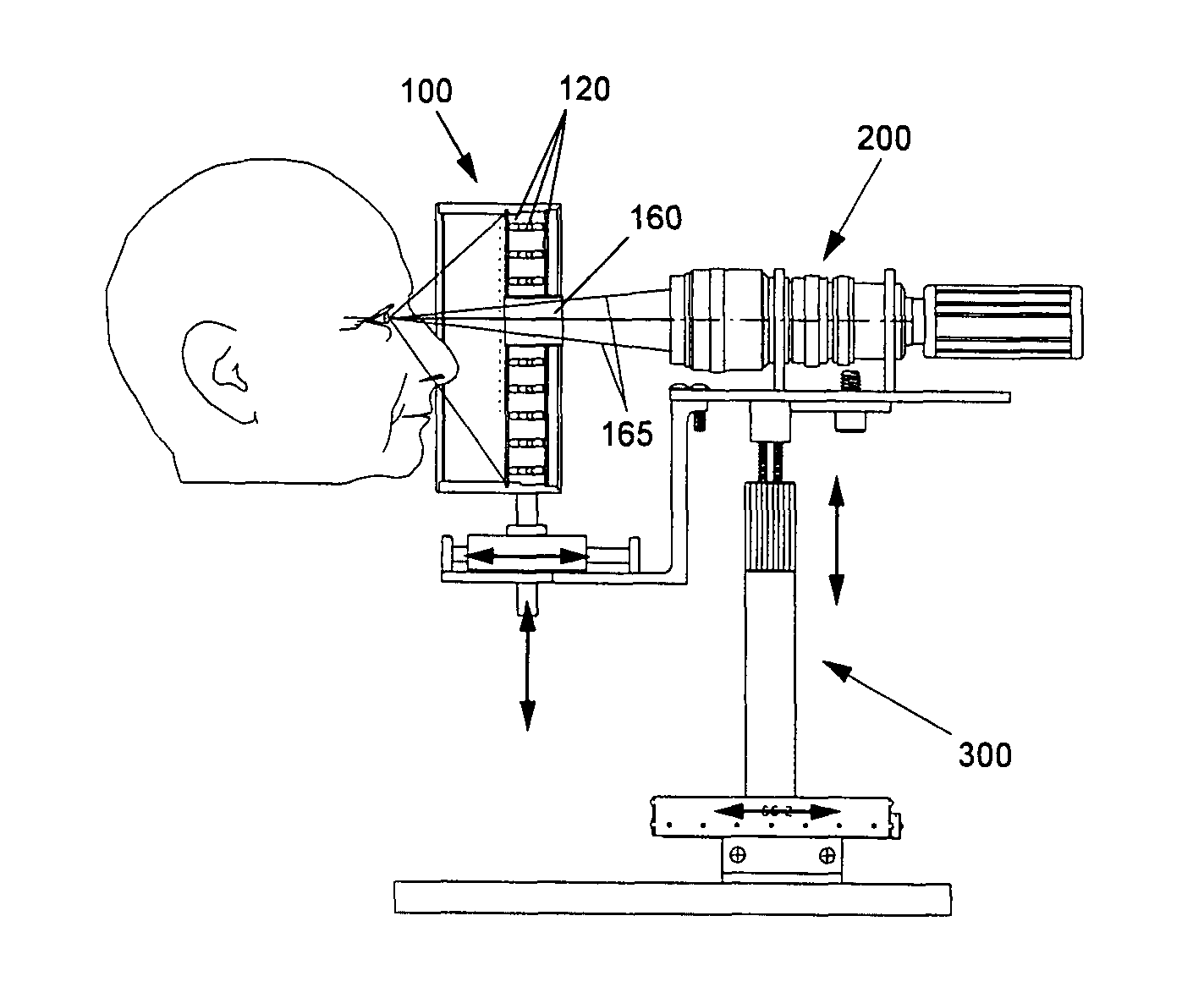Tear film measurement
a technology of tear film and thickness, applied in the field of tear film thickness measurement, can solve the problems of many promising treatments for dry eye that have failed to receive food and drug approval from the united states, and the structure is often disrupted, so as to avoid the introduction of virtually all system-induced inaccuracy
- Summary
- Abstract
- Description
- Claims
- Application Information
AI Technical Summary
Benefits of technology
Problems solved by technology
Method used
Image
Examples
Embodiment Construction
[0037]While the present invention will be described more fully hereinafter with reference to the accompanying drawings, in which particular embodiments are shown, it is to be understood at the outset that persons skilled in the art may modify the invention herein described while still achieving the favorable results of this invention. Accordingly, the description which follows it to be understood as a broad teaching disclosure directed to persons of skill in the appropriate arts and not as limiting upon the present invention.
[0038]In a first embodiment best shown in FIGS. 1, 2 and 6-8, referred to herein as the “full eye illuminator”, the present invention broadly comprises illuminating the lipid layer of the patient's eye and observing the light specularly reflected therefrom. A second embodiment best shown in FIGS. 3a, 3b, 5a-5c and 9-11, referred to herein as the “half eye” illuminator is shown. The mode of operation of the two embodiments is substantially identical and they will...
PUM
 Login to View More
Login to View More Abstract
Description
Claims
Application Information
 Login to View More
Login to View More - R&D
- Intellectual Property
- Life Sciences
- Materials
- Tech Scout
- Unparalleled Data Quality
- Higher Quality Content
- 60% Fewer Hallucinations
Browse by: Latest US Patents, China's latest patents, Technical Efficacy Thesaurus, Application Domain, Technology Topic, Popular Technical Reports.
© 2025 PatSnap. All rights reserved.Legal|Privacy policy|Modern Slavery Act Transparency Statement|Sitemap|About US| Contact US: help@patsnap.com



